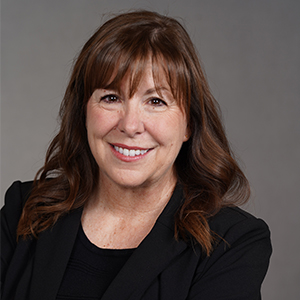Editor in Chief Sarah Wheeler sat down with Ike Suri, chairman and CEO of FundingShield, to talk about rising fraud risks, what keeps him up at night, and why AI is still far from helpful in his business of protecting clients.
Sarah Wheeler: FundingShield just released its Q1 Fraud report, which showed that nearly half of the loans processed in the first quarter showed fraud risks. These were not just mortgage loans, but were you surprised at how high the numbers were? Wire fraud risk in particular was present in 9.2% of the loans.
Ike Suri: It was the highest we’ve seen for wire fraud risk. Are we surprised? No, it’s been hovering around those high levels of risk all along.
Part and parcel of the elements that contribute towards the overall fraud risk is all the movement in the industry. There are so many different angles of what affects the market at any given time. With the environment we’re in today, you’ve got attorney states where we see a lot of this fraud happening. The attorneys have a lot of control over the transaction and you can see a lot of regulatory compliance issues being missed so we see a higher risk of concentration in those states in comparison to the non-attorney states.
This quarter there was a higher rate of risk for CPL validation errors, with 13.2% of transactions having those kinds of errors. CPL validations cover things like agents being in good standing, data accuracy between lenders and title systems, and agent registration/active status.
SW: Is it always the case that you see more risks in attorney states?
IS: Every state is different in their rules and policies when it comes to this industry. The non-attorney states are such a large universe, and often those states have adopted common practice of protecting loans against fraud as far as how policies are written and how they’re adopted. So there has been more success there.
When it comes to the attorney states, each attorney one is different from each other and it gets down to the specialists in those states. How good of a job are they doing in regards to volume that’s going through them? How well are they equipped to handle resources? How committed are they to staying compliant? You would imagine they are, but unfortunately, we’re finding these errors and the issues that lead to fraud or risk not being managed.
SW: The report calls out wire fraud specifically. What’s the latest here?
IS: We saw wire fraud risks in 9.2% of the loans — that’s a pretty large spike. Of course, one loss to wire fraud is too many. We can’t tolerate even one loss in this industry because it’s someone’s life savings. And that kind of fraud can actually throw off a small IMB or a mid-size IMB because the amount is not small by the time you’re done with penalties, losses, and the investment of time and energy to deal with lawsuits, attorneys, audits and so on.
SW: What differentiates FundingShield’s tech?
IS: The fundamental principle of our technology is that we structured ourselves to be seamless plug and play. That means we can plug into any workflow at any given time, with the most appropriate time at closing because that’s where a lot of fraud is happening.
There are new players that get involved at closing and there’s new software that gets involved as vulnerable endpoints. From new players to new software to new integrations — there’s risk there to be mitigated, which is what we’re doing.
The industry itself has so many different platforms, different LOSs and different tech stacks. And in the last few years, those who have kept up with a tech stack that is nimble, quick and plug and play — they are then able to move quickly.
The same applies for a tech stack when it’s consumer-facing because not all consumers have the resources to protech themselves from fraud. And because they don’t have the resources, they’re the most vulnerable — it’s their down payment! Without them there is no industry. Homebuyers are being attacked, so if you can provide help and protection for them, you have contributed quite a bit to the industry.
SW: How is FundingShield leveraging AI?
IS: We have a business where we cannot tolerate any error or any loss. We’ve been spending a lot of time with AI companies for the last four years and a lot of it is actually machine learning — it’s not really AI. For AI, you need to get out to the metaverse of collecting data beyond your own castle, and be able to deliver something that’s a lot more valuable, a lot more efficient or a lot more customer-service oriented or solution-provider oriented.
Depending on where it is, in our business, we have learned over the last four or five years that AI can only help us with some redundant tasks like machine learning. But when it comes to risk and fraud, it cannot be riding autonomously. It won’t help — we can’t tolerate a 95-96% efficacy from AI. I’ve seen good growth in AI for companies that were extracting unstructured data — going through that speed process of scanning 800 pages per loan and figuring out what they can extract and use. That’s nice way of using some AI on top of your OCR technology.
However, when it comes to fraud, it’s more complicated. So in our business, we can use AI on the customer service side, or information gathering and awareness of what’s going on in the market. But it’s too early to say how AI can be relied upon for actual fraud risks.
SW: What keeps you up at night?
IS: New schemes being introduced in the market, bad actors out there finding new ways to perform fraud. Fraud-as-a-service has grown to such a large extent that we are fighting a digital war. It’s affecting homebuyers and others in the U.S. that are being attacked every day. We’re so vulnerable from outside state-sponsored agents who are coming in to attack Americans, using our tech to attack us.
That’s what keeps us up at night: figuring out the next scheme. And how do we make sure we stay on our toes in an industry that’s going to be constantly evolving, constantly changing?
SW: How do you do that?
IS: Well, I think we’ve been lucky to attract a good team like my president, Adam Chaudhary and others from the industry. We have learned a lot from our customers and we evolved with our learnings at MISMO. We have customers of all different kinds from different channels — from resi, to commercial to private lending — and we learn from their pain points and put our arms around it. It’s a constant marathon. It’s not a sprint. And we do that by being diligent about committing resources and ensuring that we are running ahead of the problem by looking at each customer’s issues and pain points.
SW: What is one thing you wish companies cared more about as it relates to their risk of fraud?
IS: I think for most companies in this industry, their historical experience with technology has been that it’s expensive and time consuming and they are not sure they’re going to get results out of it. It’s also a very volatile, margin-challenged business, so that their trust in tech is not as much as it should be today. Now the industry is in a position where the two biggest priorities for companies is to cut costs and avoid the cyberthreats that can shut them down overnight. And now tech can solve these pain points. It can cut costs, unlike in the past, and it can do it in a plug-and-play manner. And tech can help protect them.
But then it comes down to how these companies are built. Because to be able to resolve these two issues, it requires someone who’s not just running ops independently, but it’s tied to risk management and compliance. Then they can make a joint, coordinated decision to achieve those goals and find technology to be a partner — not just to save money, but contribute profits to the bottom line.






